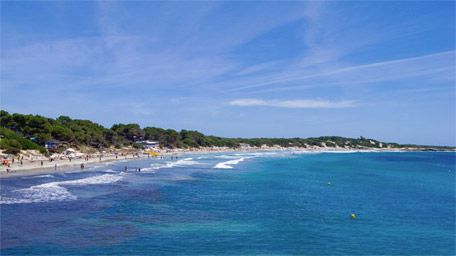
If there is a tourist destination in Europe that stands out greatly when arriving the summer, that without a doubt is Ibiza. His name is synonymous with big parties, partying and chaos. However, for those who live in this beautiful island, Ibiza is fields of almond trees, secluded beaches, peace and calm, too calm.
The island.
The first thing that tends to draw the attention of the visitor are the dimensions of this paradise. What for many may be a daily shift, here seems to us an infinite distance. Thirty-two kilometers, the roads are finished. In the simple journey from the capital to the Cala San Vicente, some must take something from biodramina. Travel to work or to the place of recreation are translated in minutes and that has an impact on quality of life. In time won at the time. In a “no rush” present on the island.
Their peoples.
Before the great tourist invasion, Ibiza was composed of the upper town and four villages. Fishermen of entrenched customs, Eulália, Sant Josep, Sant Antoni and Sant Joan. Of the four, only the latter, most northern and isolated, has retained Ibizan style. Maybe for its “remoteness” of major highways and the main town. Today, this division is more administrative than real. The urban complexes grow along the coast, with the exception of the sections of the North Coast. This area is so steep that its multitude of bays is only accessible by boat and the interest of the resorts is scarce. Playa d’ Bossa or Port des Torrent have become huge leisure centers devoted almost exclusively to tourism.
Its people
To define Ibiza, perhaps multicultural would be the more appropriate term. The peasant population makes time that was surpassed by people of all nationalities and places in Europe. Perhaps dominate the Germans and Englishmen, but if sufficient time remains, you can learn French, Italians, Dutch, Belgians, and arrival most recent, East and South Europe. The African colony has also established their roots on the island, as in almost all Spain, together with East. What the peasant’s more rancid lineage is concerned, they tend to be people of deeply-rooted traditions, Mediterranean spirit rule (again you tomorrow) that have allowed and accepted the incursion of new cultures without losing a moment the charm of their own. Despite moving in circles increasingly less closed (there are still people who define the peninsular as “Murcia”) its permissiveness toward other cultures has managed to leave good dividends to the island.
Its beaches.
World famous coves of Ibiza get followers with each summer season. There are many who seek a most remote and least populated place to take a bath without more company than the sea, rocks and pine trees. The bars are no longer serve sardines and beers to pass the cocktail and the boxspring. Music invades (sometimes destroys) a landscape in which only the birds and the waves should make noise. But fortunately, there are also beaches of this type, where children splash only bothers to small fishes that inhabit the bottom of the Mediterranean.
Their culture.
Until recently unknown, neglected and abandoned to their fate. The widespread fall in tourism and the search for the winter season has made it necessary to the creation of new standards of a forgotten island. Unless it continues to enable authorities to return back and dedicasen more time to take care of his legacy. More than two thousand years of history have appeared where before only had stones and broken vases. An interest caused by extraordinary income from the Declaration of Ibiza as a World Heritage. It is sad that only in this way the political class, more determined to demonstrate their fervent catalanism to intentions to progress, is put of agreement to preserve a cultural heritage immensely more relevant than the own extension of Ibiza.